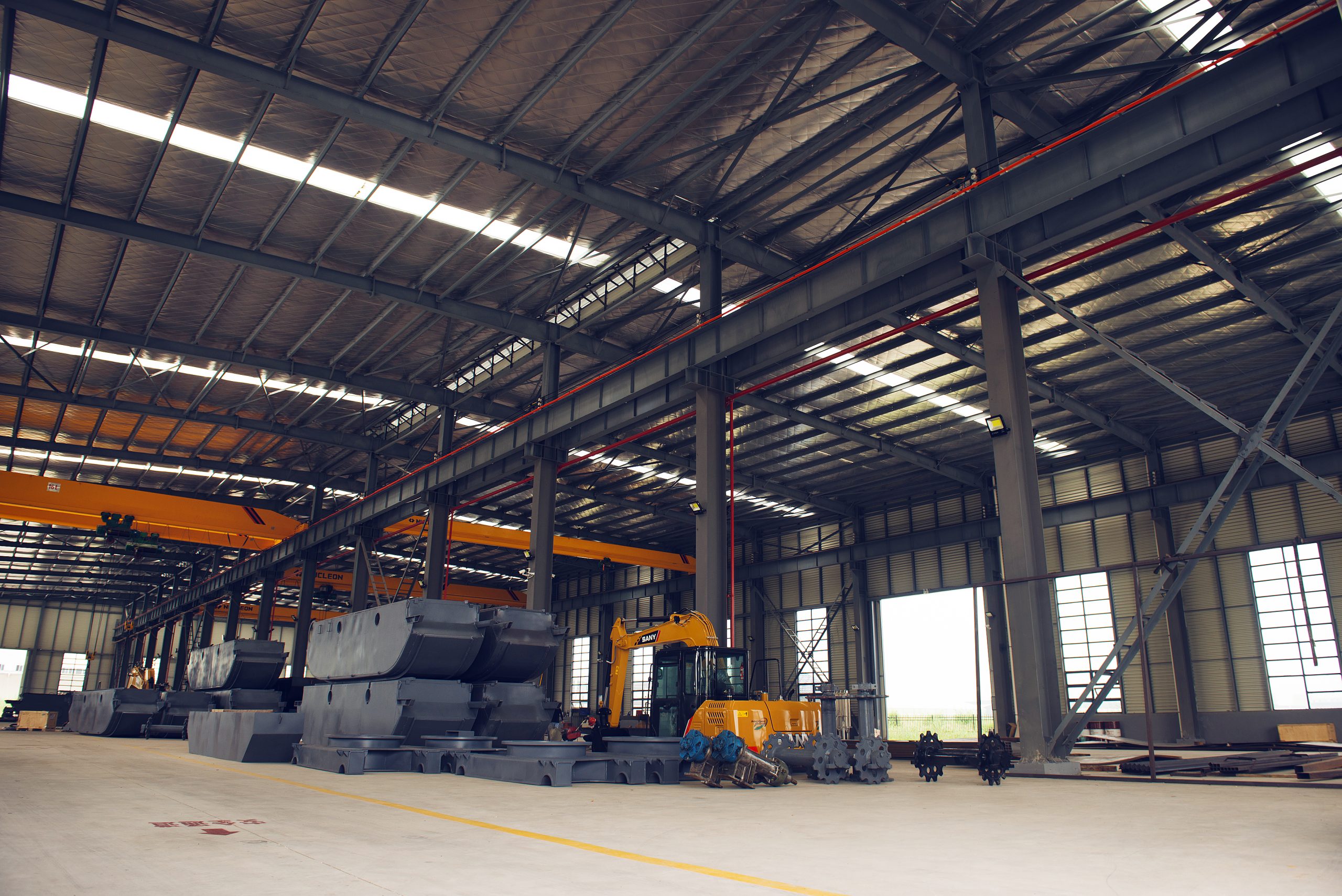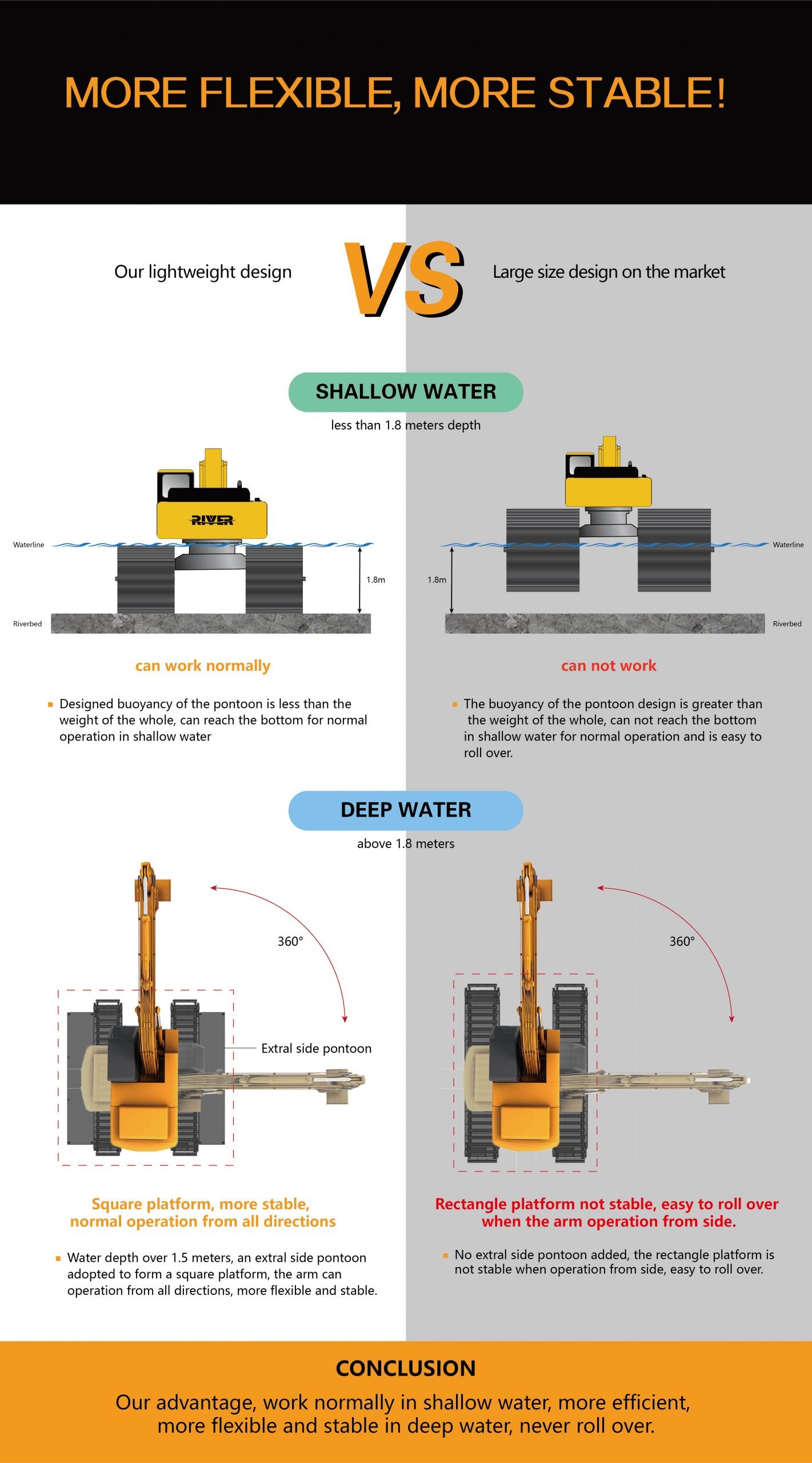Regarding the floating tanks of amphibious excavators, many customers instinctively feel that the larger the floating tank, the better. So, is this the case? River Machinery editor made corresponding analysis and answers to such problems.

What are the specific differences between them?
First of all, we must know what purpose some manufacturers have made amphibious excavator pontoon bigger? Because the pontoon is made larger, it can bring greater buoyancy, so it can be applied to silt, shallow water and deep water areas. We make the floating tank relatively small and can operate in silt and shallow water areas. If we want to operate in deep water, we need to add a extral side pontoon. So, what is the difference between these two different solutions to customers?
Difference One
The construction operation of amphibious excavators often involves the problem of transportation. If the pontoon is too wide and too high, it will double the transportation cost or more, while this is can be solved for the smaller pontoon in one vehicle. Obviously, too large a floating tank will increase the difficulty and cost of transportation.
Difference two
There are many 20-ton amphibious excavators on the market (the weight of the whole machine is about 30 tons), when operating in silt and shallow water areas (within 1.5 meters). The buoyancy provided by the larger pontoon bigger than the whole weight of excavator. As a result, it cannot reach the bottom in the mud and shallow water areas, it is not flexible to walk during work, the operation is difficult, and the unstable floating excavator is easy to roll over. The buoyancy provided by the relatively small pontoon is about 26 tons. It can reach the bottom in the mud and shallow water area, and it is stable and flexible during operation.
Difference Three
When operating in silt and shallow water areas, due to the large volume and weight of the large pontoon, the resistance encountered during walking operations is also large, and the engine needs to provide more power, so the climbing ability is relatively weak. Conversely, relatively small pontoon amphibiou excavatsors are more flexible, faster, and fuel efficient when operating, so the efficiency will be much higher.
Difference Four
When operating in deep water areas (above 1.8 meters), when the excavator arm of the amphibious excavator with a large floating tank swings left and right, it will cause left and right imbalances. Therefore, the excavator is very unstable and it is often easy to cause rollover accident. The amphibious excavator with a relatively small pontoon will add a small side pontoon to the left and right sides during deep water operation, and the entire lower body will form the shape of a square platform. Therefore, when working in deep water, it will be relatively stable.
Difference five
An amphibious excavator with a small floating tank when working in deep water areas. Due to the relatively small length of the pontoon, the working radius of the excavator arm will be larger when working, and sometimes the standard arm can complete the work. The amphibious excavator with a larger pontoon also needs to add a longer arm.
Therefore, amphibious excavator is not better with larger pontoon undercarriage, but suitable pontoon is the best! For more information about amphibious excavators, please view more at our official website or contact our official mailbox.

